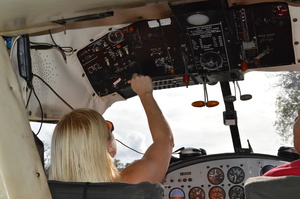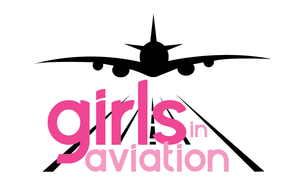Adventures in the traffic pattern
Steve Guetter, CFII
We entered downwind at pattern altitude, gear down which slowed us to 90 knots and communicating with the Archer who we had seen on crosswind, he did not have our Bonanza in sight. Somewhere around midfield downwind, still at 90 knots, I was dumbfounded to look up and out to see the Archer 100 feet above us and to my amazement overtaking us. We radioed the pilot who maintained his altitude and extended his downwind, we landed without incident. On a hazy winter day while Kjersti and I were instructing in separate planes I watched a Bonanza, who was not making regular position reports, cut Kjersti and her student off as they were about the turn final. It does not take many hours of flight to have a few stories like this to tell.
Traffic has its greatest concentrations around airports, most of which are uncontrolled; it rests on all of our shoulders to maintain a safe airport environment. A safe environment relies upon the use of standard procedures, communication and teamwork.
Standard procedures
The FAA is clear in its guidance as to how we are to enter and leave the traffic pattern, we as pilots however readily modify these procedures. Common modifications include how the pattern is entered, exited, and altitude it is flown.
Standardization of traffic patterns enhances our safety. By flying a common traffic pattern we know what to expect when other aircraft share the pattern with us. Common terminology and phraseology take the guess work out of interpreting what we are hearing on the radio. In cases where pilots are not announcing we know where to look for other planes that may get in our way.
When we choose to modify a standard pattern we reduce some of the safety margin that is afforded to us when expected procedures are followed, other planes do not know where to look for us. Kjersti was recently flying with a student, on short final for a touch and go another aircraft announced that they were going to enter the pattern on an upwind leg. When the student said they would be doing a touch and go, the other pilot seemed surprised. Entering the pattern in this manner resulted in reduced separation, reduced visibility and increased risk for both aircraft.
A pilot may choose to modify the traffic pattern for many reasons, they may do it reduce flight time by one tenth on the Hobbs meter, they may not fly into uncontrolled airports often and do not recall proper procedures others may simply not care. Whatever our reason for modifying the traffic pattern, if this choice is made we need to take time to analyze the choice and the risk we add for ourselves and others.
Communication
There is no legal requirement to self-announce at a non-controlled airport. Some aircraft are not equipped with an electrical system, let alone a radio. The traffic pattern is a busy place, we are configuring our aircraft for landing, running through pre landing checklists, communication is a necessity to augment see and avoid during this phase of flight.
Communication in the traffic pattern, along with scanning for traffic is a key to situational awareness. When announcing your position, a good practice is to do it while in a turn. The bank of the wings will make your aircraft easier to spot for other pilots. Radio calls should succinct; on busy days additional chatter can cause frequency congestion. If your plane does not have a radio installed it is highly recommended to have a handheld to make announcements.
Teamwork
Aviation is a team activity, as much as we relish our freedom in the air, tell stories about our first solo, and embrace the responsibilities of being Pilot in Command, we depend on each other. Teamwork can be seen on a sunny day when pilots extend downwind to make room for a fellow pilot on an instrument approach, or two planes coordinating their pattern entries or departures. As with any team, there are times this comradery will break down and need to be dealt with.
Most pilots are team players when we are in the air working with each other to create a smooth traffic flow. Knowledge of other aircraft and operations can take time to develop. As we develop this knowledge there are some considerations to keep in mind. Some aircraft need extra space due to its speed, if a pilot is about to finish an instrument approach it is courteous to extend a downwind, you may have been in the pattern first, the other pilot spent up to the last 15 minutes setting up their approach. Give them some extra room; someday the favor will come back to you.
On Final
The traffic pattern is a high workload time for pilots, it can also have the highest traffic congestion that we are likely to experience during our flight. We can minimize the work load by flying the FAA prescribed traffic pattern, communicating with other pilots that are sharing the same airspace and working together so we can all smoothly get to our destination. Be safe out there!



You must be logged in to post a comment.